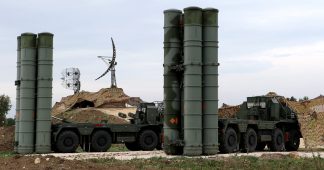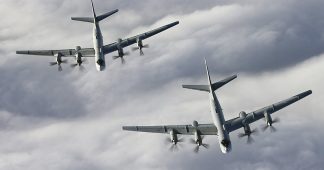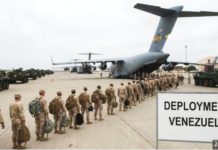The F-35 is such an incredibly integrated platform that changing its sensors would be like asking Apple to manufacture an iPhoneX just for you — with a Google pixel camera, a Samsung galaxy OLED screen and a Nokia touch sensor, just to make it compatible with your Windows laptop and Android tablet
By Abhijit Iyer-Mitra and Angad Singh
Mar 12, 2018
The United States-produced F-35 stealth fighter seems to be the flavour of the moment in Delhi. Much of this has to do with a wink-wink, nudge-nudge campaign on since 2011 when it was reported that the US had offered a fixed price contract for the F-35A basic variant. Washington, at that point, swiftly dismissed rumours stating that the F-35 was not on the table right now. In private, top officials have been much more forthright giving us an emphatic “no…. there is a lot that needs to happen in the relationship before that conversation”. Surprisingly, more daydreaming by the air force has made manufacturer Lockheed Martin claim again that the F-35 is available to India, contrary to facts reinforced by official US government denials. This begs three questions: what are the operational impediments of the F-35? What are the associated costs? and what are the political sensitivities?
Operationally, the stealth tag merely makes it a great tactical fighter, while the real punch comes from the 5th generation tag, making it a node in a highly networked system of systems.
An inexact analogy is the iPhone X — it’s got great call quality, stunning visual, excellent camera, but imagine if it couldn’t interface with Gmail, Twitter, Paytm, Uber, or connect to Wi-Fi or 4G. In the F-35’s case not only is it unable to refuel from our current generation of tanker aircraft, it also cannot interface with India’s Integrated Air Command & Control System (IACCS) comprising ground and airborne radars, with customised data-links. Additionally the level of customisation for its target discrimination system that allows it to tell friend from foe, would have to be replaced completely as would all radio communications equipment. Logistically, almost none of our current weapons would be compatible with the F-35, meaning investing vast amounts in new air-to-air, ground and sea munitions, further complicating our already shambolic logistics.
But the real killer is control: India will not have control over anything on this plane — not the weapons, not the integration of new weapons, not even upgrading the threat database for the electronic warfare systems to jam forcing India to share our most sensitive signals intelligence with the US.
This brings us to the critical issue of cost. Why would something as simple as buying a new plane mean that our entire extant communications, logistics, equipment and infrastructure have to be changed? Technologically-speaking, again an Apple analogy. If you desperately want a seamless Apple experience with your iPhone X, you have to buy a Macbook and an iPad. The F-35 is such an incredibly integrated platform that changing its sensors would be like asking Apple to manufacture an iPhoneX just for you — with a Google pixel camera, a Samsung galaxy OLED screen and a Nokia touch sensor, just to make it compatible with your Windows laptop and Android tablet. All of this shoots the price up exponentially with no quality assurance of it working as intended at the end.
A few years back, Nato threatened Turkey with severe consequences for attempting to integrate a Chinese air defence system into its networked hub, ultimately forcing it to abandon the deal. For India, whose equipment is overwhelmingly Russian, the belief that the Americans will sell their crown jewel to interface with Russian equipment is laughable, especially in the wake of Russia’s sophisticated hacking of US elections, and India’s notoriously lax data hygiene and operational security.
Right now the level of political trust without India signing the Communication and Information Security Memorandum of Agreement (CISMOA) stands at F-16 transfer and that is all. For India to qualify for the F-35 politically, it would either have to abandon all its Russian equipment and ‘strategically autonomous’ networks, and make all equipment CISMOA compatible, or it would get a hollowed out aircraft, at a significant cost escalation with vastly reduced capabilities.
In short, the F-35 is a brilliant plane that’ll either wreck the budget or wreck our operational capability for decades to come with a very high political cost. Any talk of acquiring it therefore is deeply misguided, incredibly uninformed and incredibly dangerous.
* Abhijit Iyer-Mitra is senior fellow, Institute of Peace and Conflict Studies and Angad Singh is deputy director, Project Adhira: an airpower focussed think-tank











